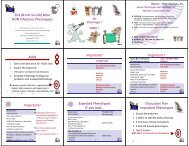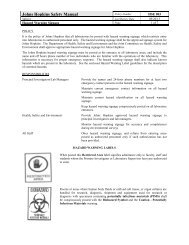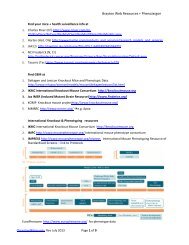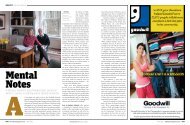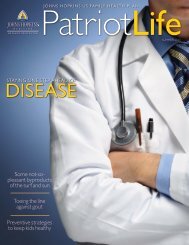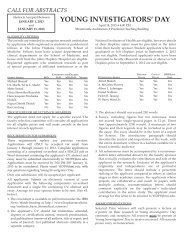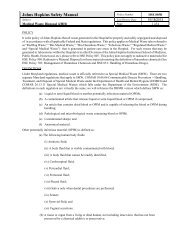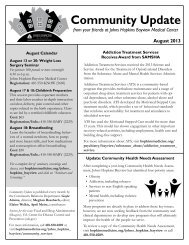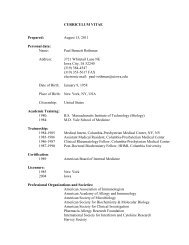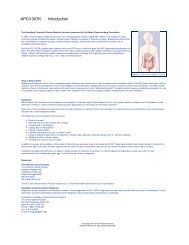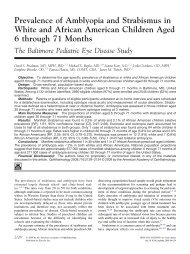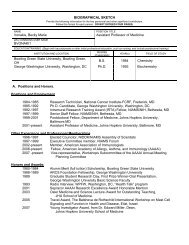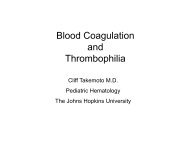Overview Key Concepts Anesthetic Management Anesthestic ...
Overview Key Concepts Anesthetic Management Anesthestic ...
Overview Key Concepts Anesthetic Management Anesthestic ...
You also want an ePaper? Increase the reach of your titles
YUMPU automatically turns print PDFs into web optimized ePapers that Google loves.
Small animal Anesthesia for Imaging<br />
C Garrett 2012<br />
Physiologic Monitoring<br />
Minimal change in homeostasis<br />
‣ Challenging in the imaged patient<br />
‣ Visualization<br />
‣ Adaptable equipment<br />
‣ Parameters to monitor and control<br />
‣ Heart rate<br />
‣ Respiratory rate<br />
‣ Temperature<br />
‣ %SpO 2<br />
‣ ETCO 2<br />
‣ Cardiac activity (EKG)<br />
‣ Blood pressure<br />
Physiologic Monitoring<br />
‣ Pulse oximetry:<br />
‣ Arterial Hb %SpO 2<br />
‣ NIBP: Doppler<br />
‣ Temperature<br />
Rat<br />
Mouse<br />
‣Mouse:<br />
Normal Physiologic<br />
Parameters<br />
‣ Temperature: 97.5 – 100.4°F<br />
‣ Respiratory rate: 150 – 220 bpm<br />
‣ Heart rate: 550 – 700 bpm<br />
‣Rat:<br />
‣ Temperature: 96.6 – 99.5°F<br />
‣ Respiratory rate: 65 - 115 bpm<br />
‣ Heart rate: 250 – 450 bpm<br />
Fasting<br />
‣ Depends on your study and imaging modality<br />
‣ Ex: PET FDG imaging<br />
‣ Decreases blood glucose<br />
‣ ~ 6 hrs fast clears stomach, longer can be detrimental<br />
reduced body mass, fatty acid levels, water intake)<br />
‣ Rodents are nocturnal feeders<br />
Length and timing of fast should be<br />
documented<br />
Fluid Therapy<br />
‣ Prolonged anesthetic events lead to sensible and insensible<br />
water losses<br />
‣ Cautious use of fluids in models of cardiovascular disease<br />
or hypoproteinemic subjects (e.g. hepatic, renal or<br />
gastrointestinal compromise)<br />
‣ Administration routes: subcutaneous, intraperitoneal or<br />
intravascular<br />
‣ Compensate for fluid loss and administer daily<br />
maintenance requirements (50 – 100ml/kg/day)<br />
‣ Pre-warmed (37°C ) fluids: 0.9% NaCl or LRS<br />
Heat Support<br />
‣ Rodents have an incredibly large surface area to body mass<br />
ratio → rapid hypothermia<br />
‣ Prolonged anesthetic recovery<br />
‣ Altered cardiovascular function<br />
‣ Heat support maintained until ambulation<br />
‣ Heating options: Image modality dependent!<br />
‣ Self-regulating heating blocks<br />
‣ Water-circulating heating pads<br />
‣ Insulation (e.g. saran wrap)<br />
‣ Pre-warmed subcutaneous fluids<br />
‣ Hand-warmers<br />
‣ Heat lamps<br />
4



